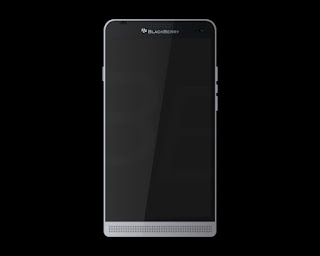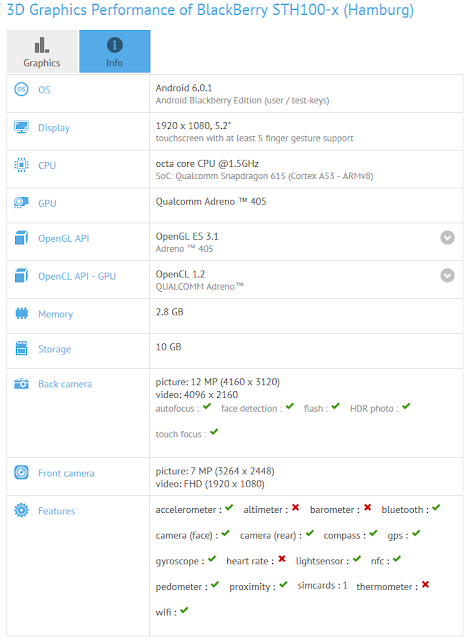Windows 10 testers can now get Android phone notifications on their PCs
By Tom Warren @tomwarren
Microsoft revealed earlier this year that it was planning to bring Android phone notifications straight to Windows 10 PCs. If you're a Windows 10 tester then you can enable this new feature today. A new update for the Android version of Cortana will allow you to enable individual apps to sync their notifications to a Windows 10 PC.
Missed calls, messages, and other notifications from an Android phone can appear on a PC, and they should arrive within a few seconds of them appearing on a phone. Microsoft is using its cloud services to sync the notifications, and Windows 10 users will even be able to reply to the Android notifications directly from a PC. If you're not a Windows 10 tester then this functionality will arrive with the Anniversary Update this summer.
VIAWINBETA
SOURCECORTANA FOR ANDROID (GOOGLE PLAY STORE)
- digg
Watch Google's Annual I/O Keynote
Google's annual I/O developer conference happened Wednesday afternoon. You can watch the whole thing below and check out the big announcements here.
BlackBerry Hamburg at GFXBench confirms mid-range Android specs
JC Torres
The bevy of announcements dropped at Google I/O may have many Android fans salivating over the idea of new smartphones and tablets carrying Android N soon. Of course, that's not gonna happen yet, even late this year, as most devices still to come will most likely still carry Android 6.0 Marshmallow. Take for example BlackBerry's Android "Hamburg" handset. Yes, another full Android smartphone coming from the embattled Canadian company. And based on this sighting at GFXBench, it will indeed be a mid-range device as rumored. At least it looks to be a decent one at that.
Even, or especially, benchmarks like GFXBench and AnTuTu can be fooled, so always take these unconfirmed tidbits with a grain of salt. Then again, it hard to go wrong when it comes to standard mid-range specs, so this listing could very well come close to the real thing, give or take a few details.
The Qualcomm Snapdragon 615 and 3 GB of RAM clearly marks it for the higher end of the mid-range spectrum. A 5.2-inch screen with a resolution of 1920x1080 isn't exactly out of the ordinary at this tier either. While common, the 16 GB of storage is still rather disappointing at this day and age. A microSD card will definitely needed for this.
There are still some aspects that may or may not change. Like the 12, maybe even 13, megapixel camera on the back, paired with an 8 megapixel at the front. Without further details, it is hard to judge the cameras based on megapixel count alone. That said, selfie lovers will probably be tickled pink anyway. The design is also still a matter of debate, with the latest leak pointing to a traditional all-screen form factor. In contrast, BlackBerry's other rumored Android phone, codenamed "Rome", is believed to have a fixed physical keyboard at the bottom.
BlackBerry is expected to unveil both smartphones in August, barely a month after Android N's scheduled launch. So naturally, it will come with Android 6.0.1 out of the box. BlackBerry will most likely try to do good by its customers and update that to Android N eventually. It might, however, take some time, considering how long it took to upgrade the BlackBerry PRIV to Android 6.0.
VIA: BBin
- digg
Facebook and Snapchat are trading blows in a fight for messaging domination and the money that comes with it
BIZ CARSONAPR
An example of an advertisement on Snapchat
The gloves are off between Snapchat and Facebook.
In the last month, Facebook bought Masquerade, an app that looks identical to Snapchat's most famous filter feature.
Snapchat retaliated by buying Bitstrips, the maker of the popular Bitmojis that went viral and became a business in 2013 thanks to it being a hit on Facebook.
This week, Snapchat massively overhauled how people chat, taking the best parts from Facebook's messenger and adding its own unique features on top.
It was a clear signal: The company known for disappearing photos isn't just a play toy any more. It's a full-fledged threat to Facebook for both users and advertisers, and they're both re-drawing the battle lines as they try to siphon advertising dollars, users, and power from each other.
Here's how the competition is playing out:
Round 1: Attract the users
Messaging and video are two of the biggest battlegrounds in which Snapchat and Facebook now compete for users' attention.
Facebook has long sought to own the messaging market, using WhatsApp to grow in overseas markets while peeling its Messenger app out of the core social network and turning it into a full-fledged standalone app.
The gloves are off between Snapchat and Facebook.
In the last month, Facebook bought Masquerade, an app that looks identical to Snapchat's most famous filter feature.
Snapchat retaliated by buying Bitstrips, the maker of the popular Bitmojis that went viral and became a business in 2013 thanks to it being a hit on Facebook.
This week, Snapchat massively overhauled how people chat, taking the best parts from Facebook's messenger and adding its own unique features on top.
It was a clear signal: The company known for disappearing photos isn't just a play toy any more. It's a full-fledged threat to Facebook for both users and advertisers, and they're both re-drawing the battle lines as they try to siphon advertising dollars, users, and power from each other.
Here's how the competition is playing out:
Round 1: Attract the users
Messaging and video are two of the biggest battlegrounds in which Snapchat and Facebook now compete for users' attention.
Facebook has long sought to own the messaging market, using WhatsApp to grow in overseas markets while peeling its Messenger app out of the core social network and turning it into a full-fledged standalone app.
Snapchat
Over time, Facebook has added things like stickers, a popular feature from Asian messaging apps, and the ability to talk to businesses or hail an Uber. Beyond text, there's always been the option to record audio notes, make a call, or video chat.
Snapchat's chat function paled by comparison. It had its staple of disappearing bits of text, but that was it.
Now, Snapchat has added most of the Facebook messaging features and more. There's audio and video notes as well as calling. There are the stickers like Facebook has to send to friends. You can now also upload photos into messages - the first time the company has let you upload into the app whatsoever.
Messaging isn't the only battle between the two.
On the video front, the two companies appear to be in a dead heat, with Snapchat and Facebook both claiming to have 8 billion video views a day.
Snapchat continues to push its Live Stories, which curate different points of view from events around the world, and its Discover section, which has publishers creating content specifically for the company's vertical video format.
That's in direct conflict with Facebook's increasing video ambitions that have taken over the newsfeed.
So far, Facebook has responded to the rising threat by redoubling its video efforts, prioritizing professionally-produced publisher videos users' news feeds and emphasizing new live video streaming features that offer the in-the-moment feel that Snapchat users love.
It's reportedly even offered to pay celebrities to use its live-video streaming on Facebook to get more people using it. Now, it's roping in media partners (similar to how Snapchat has lured companies to publish on Discover) to broadcast their shows on the live stream.
Round 2: Bring in the ad dollars
All of Snapchat and Facebook's updates are with the goal is to entice people to use their apps repeatedly throughout the day - and to attract the advertising dollars that big brand marketers spend to reach those users.
Snapchat traditionally disavowed the type of targeted advertising that Facebook is famous for. Snapchat CEO Evan Spiegel once blasted standard online ad industry practices, such as tracking users' web visits, as "creepy."
Instead, Snapchat used television as a template for its ad business. A Gatorade ad on Snapchat in which people could pretend they took a Gatorade bath was viewed 160 million times on Super Bowl Sunday. Snapchat users weren't targeted based on whether they'd watched football in the past or not. Instead, the ad was relevant in the context of the day's events, given that the Super Bowl always ends with the water cooler being poured on the winning coach.
Snapchat sees its biggest money-making opportunity in redirecting advertising dollars away from television, rather than trying to steal ad dollars from competing social networks.
But Facebook is also targeting TV ad budgets with its emphasis on live video and pulling publishers in. And as the two social networks increasingly compete for those dollars, there are already signs that Snapchat is softening its stance on targeting and giving advertisers some general idea who their ads are being shown to.
Snapchat has worked with Millward Brown (and recently poached one of its high-profile leaders from there) to help infer the gender of its users based on what they're viewing on Discover and in other parts of the app.
Snapchat already asks users for their birthday to get an age range, and advertisers can also target based on location, device type, and context - an ad might be better tailored to appear in a Cosmopolitan Discover story than one from the Wall Street Journal. It's not quite in the "creepy" targeting that Spiegel detests, but it's closer to the way advertisers have become accustomed to plunking money down on Facebook.
There's no knock-out round yet
Facebook has spent millions since 2012 to catch up to Snapchat, and the ephemeral media company continues to pose a growing threat. The fact that Snapchat's daily active users are both numerous and spending 25 to 30 minutes a day on the app is something the incumbent social network can't ignore.
While much of Facebook's "catch-up" attempts have been trying to recreate Snapchat's product, the company is now going to have to make sure its golden nest egg of advertising dollars is also protected. Snapchat's pitching itself as an alternative to TV ads to start with, but it's clearly also starting to open up to the kind of tracking and targeting that advertisers have come to know from Facebook.
If advertisers find that Snapchat's "not-as-creepy" strategy works, it could start deviating money to the young startup and away from Facebook's fledgling digital video efforts.
To be fair, Facebook's total audience still overshadows Snapchat's by many multiples. There's also a chance it could be one step ahead with a new advertising model: Running bots through messenger.
But the opportunity is only there for Facebook if it can continue to capture users' attention, an increasingly harder task thanks to Snapchat.
- Digg
If you find this post interesting, do share it on Facebook & Google plus.




No comments:
Post a Comment